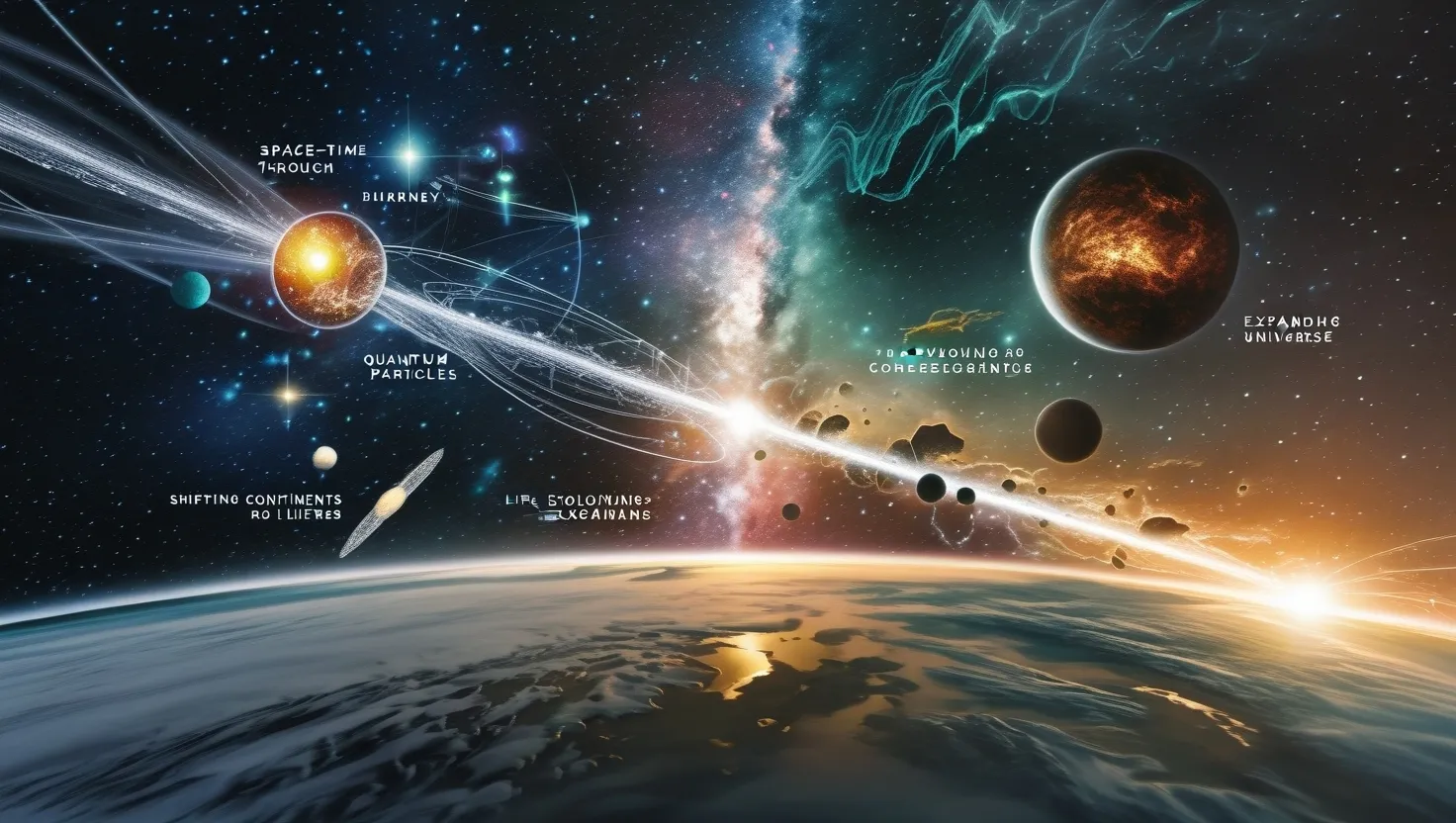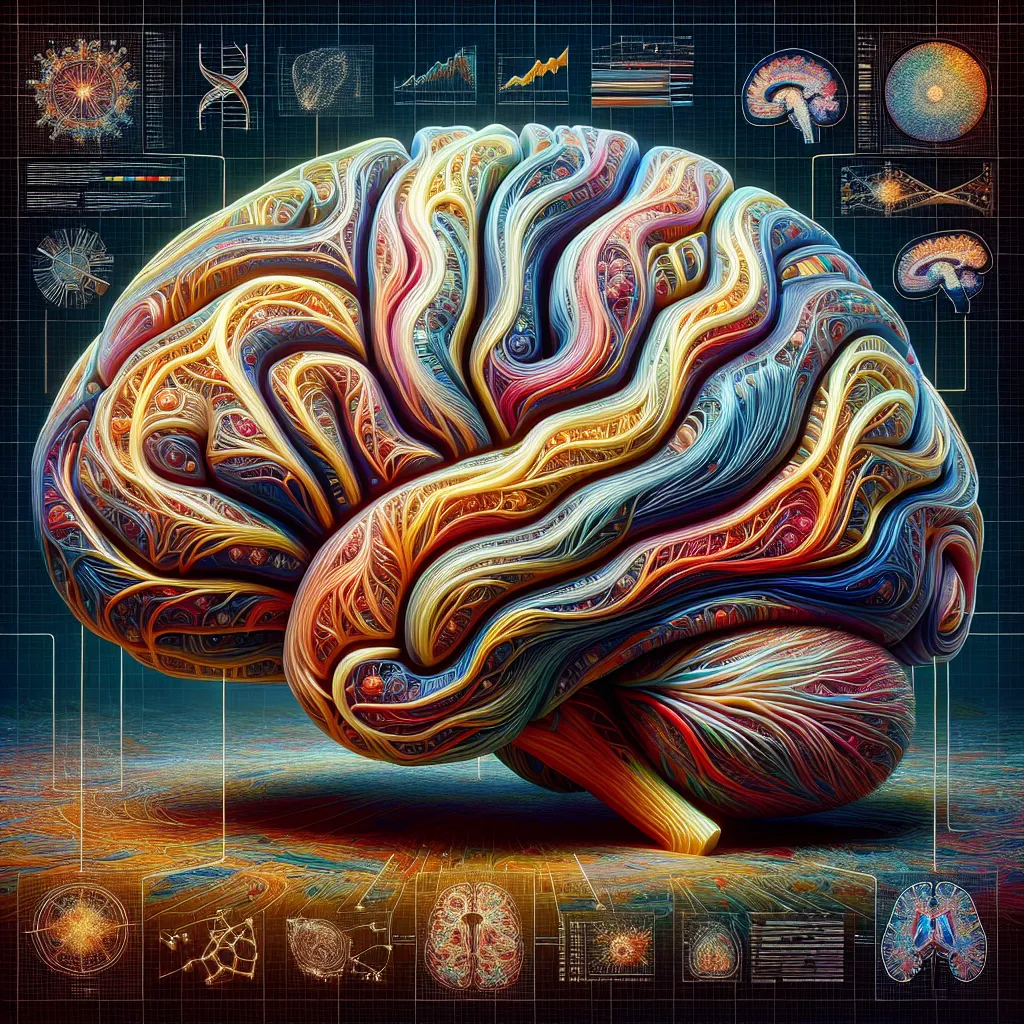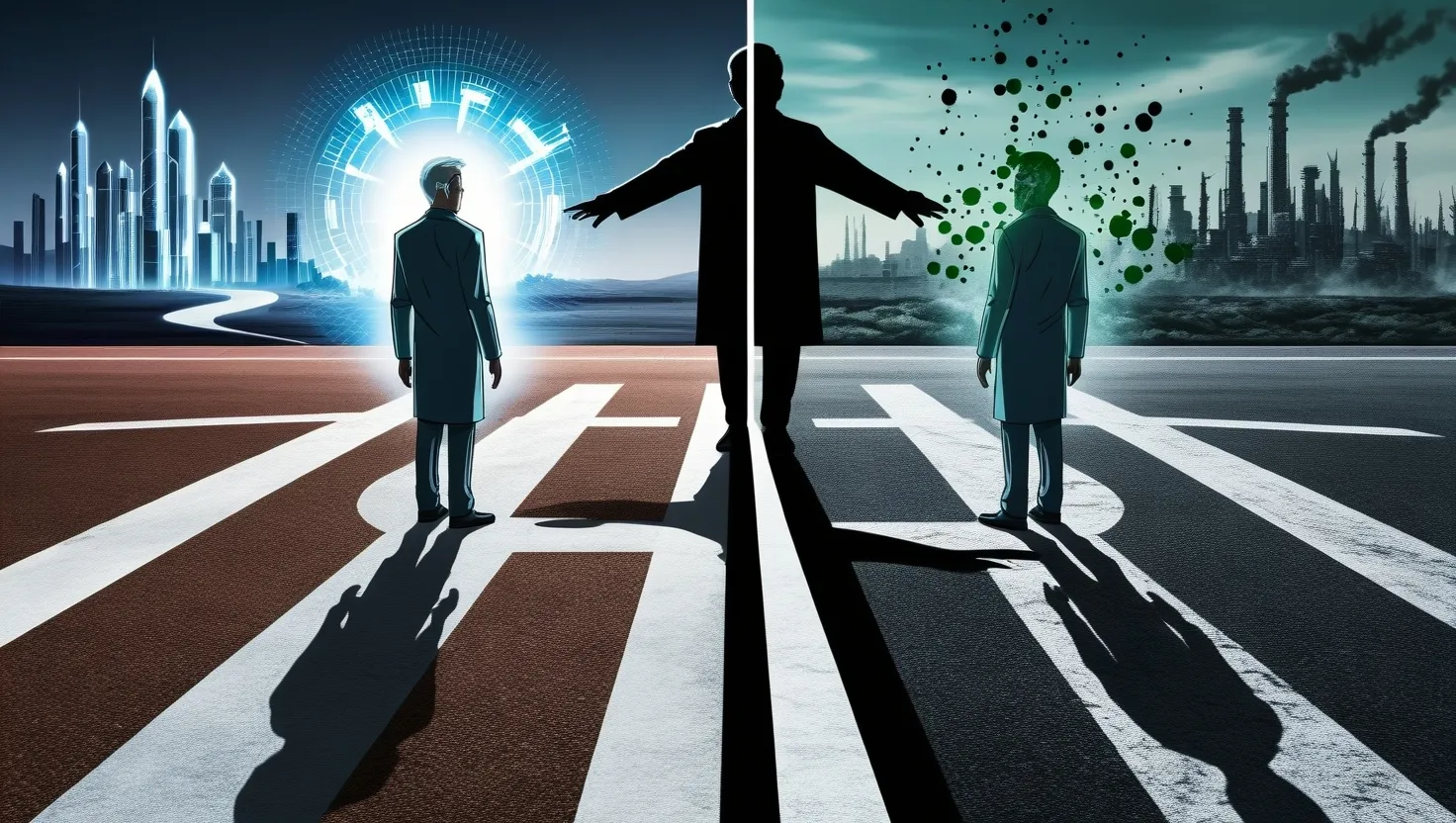As we delve into the intricacies of our universe, it’s astounding how certain theories have reshaped our understanding of reality. These groundbreaking ideas, often born from the minds of visionary scientists, have challenged our perceptions and opened new avenues of thought. Let’s explore five of these theories that have significantly altered our grasp on the world and the cosmos.
The Interconnectedness of Space and Time
Einstein’s Theory of Special Relativity is a cornerstone of modern physics. It introduced the radical concept that space and time are not separate entities but are intertwined as a single fabric called the space-time continuum. Imagine being on a spaceship, hurtling through the cosmos at half the speed of light. According to Einstein, time and space would behave differently for you compared to someone standing still on Earth. This theory, though counterintuitive, has been proven through numerous experiments, including the famous example of atomic clocks synchronized and then separated, only to show a tiny discrepancy upon reunion due to time dilation.
This idea that time is relative, dependent on your frame of reference, has profound implications. It means that the passage of time is not absolute but varies based on speed and gravity. For instance, if you were to travel close to the speed of light, time would appear to slow down for you relative to someone on Earth. This concept has revolutionized our understanding of the universe, making us realize that our experience of time is just one of many possible perspectives.
The Quantum Realm: A World of Probabilities
Quantum mechanics, another revolutionary theory, reveals the bizarre and fascinating world of subatomic particles. Here, particles can exist in multiple states simultaneously, a phenomenon known as superposition. This challenges our classical understanding of reality, where objects are either in one state or another, not both at the same time. Quantum mechanics also introduces the concept of entanglement, where particles can be connected in such a way that the state of one particle is instantly affected by the state of the other, regardless of the distance between them.
This theory has led to a new understanding of the fundamental nature of reality. It suggests that, at the quantum level, reality is not fixed but exists in a state of probability until observed. This idea has been experimentally verified and forms the basis of many modern technologies, including quantum computing and cryptography. The quantum world is a realm where the rules of classical physics no longer apply, and it has expanded our understanding of what is possible in the universe.
The Evolution of Life
Darwin’s Theory of Evolution by Natural Selection is a cornerstone of biology. It explains how species adapt and change over time through a process of mutation, genetic drift, and natural selection. This theory revolutionized our understanding of the diversity of life on Earth, showing that all living organisms share a common ancestry. The concept of evolution has far-reaching implications, influencing fields from medicine to psychology.
Imagine walking through a forest, observing the variety of plants and animals. Each species has evolved unique traits that enable it to survive and reproduce in its environment. This process, driven by natural selection, has shaped the complexity of life over millions of years. Evolution is not just a theory; it is a well-documented process that continues to shape the living world around us.
The Dynamic Earth: Plate Tectonics
Alfred Wegener’s Plate Tectonics Theory transformed our understanding of Earth’s geology. It proposed that the continents are not fixed but move on the Earth’s surface, floating on a layer of molten rock called the mantle. This idea explained phenomena such as earthquakes, volcanoes, and the formation of mountains. The theory of plate tectonics provides a framework for understanding Earth’s history, from the creation of ocean basins to the collision of continents.
Imagine standing on the edge of the Grand Canyon, looking out at the vast expanse of layered rock. Each layer tells a story of Earth’s history, a history that is dynamic and constantly changing. The movement of tectonic plates has shaped our planet over billions of years, creating landscapes that are both beautiful and dangerous. This theory has given us a new appreciation for the dynamic nature of our planet.
The Origins of the Universe: The Big Bang
The Big Bang Theory, proposed by Georges Lemaître and later supported by Edwin Hubble’s observations, revolutionized our understanding of the cosmos. It suggests that the universe began as a single point and expanded rapidly around 13.8 billion years ago. This expansion continues to this day, with galaxies moving away from each other.
Imagine looking up at the night sky, seeing the stars and galaxies that make up our universe. Each of these celestial bodies is moving away from us, a testament to the ongoing expansion of the universe. The Big Bang Theory has provided a framework for understanding the origins of the cosmos, from the formation of the first atoms to the creation of stars and galaxies. This theory has fundamentally changed our understanding of the universe, making us realize that we are part of a vast, expanding cosmos.
The Intersection of Theories
These theories, though distinct, often intersect and influence each other. For example, Einstein’s Theory of Special Relativity has implications for our understanding of the universe on a cosmic scale, while quantum mechanics provides insights into the behavior of particles at the smallest scales. The Big Bang Theory relies on both relativity and quantum mechanics to explain the early universe.
Imagine a universe where space and time are relative, where particles exist in multiple states, and where life evolves over millions of years. This is the universe we live in, a universe that is dynamic, complex, and full of mysteries waiting to be uncovered. These groundbreaking theories have reshaped our understanding of reality, opening new avenues of thought and exploration.
The Human Perspective
As we explore these theories, it’s important to remember that they are not just abstract concepts but have real-world implications. They challenge our perceptions and force us to think differently about the world. For instance, the theory of evolution reminds us of our place in the natural world, while plate tectonics highlights the dynamic nature of our planet.
These theories also raise philosophical questions about the nature of reality and our existence within it. If time is relative, what does that mean for our experience of life? If particles can exist in multiple states, what does that say about the nature of reality at its most fundamental level? These questions are not just for scientists but for anyone who seeks to understand the world around them.
The Future of Understanding
As we continue to explore and understand these theories, we are constantly reminded of how much more there is to discover. New discoveries often lead to new questions, and it is this cycle of inquiry that drives human knowledge forward.
Imagine a future where we have harnessed the power of quantum mechanics to create new technologies, where we have a deeper understanding of the universe’s origins, and where we appreciate the dynamic nature of our planet. This future is not just a possibility but a reality that is being shaped by the groundbreaking theories of today.
In conclusion, these five theories have reshaped our understanding of reality in profound ways. They have challenged our perceptions, opened new avenues of thought, and provided a deeper understanding of the world and the cosmos. As we continue to explore and understand these theories, we are reminded of the complexity and beauty of the universe we live in.






